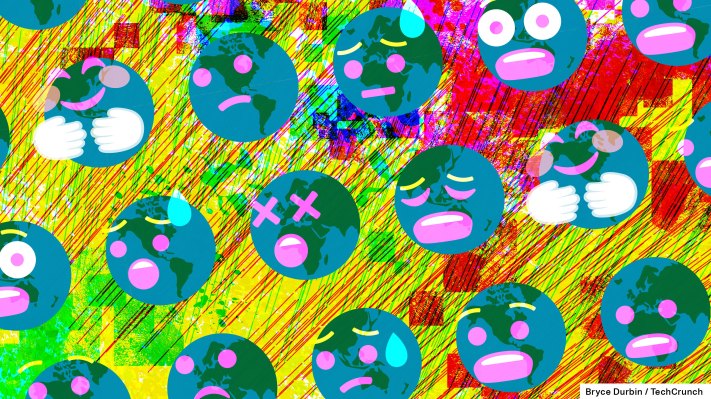Five years ago, the group that approves new emoji rejected one for climate change. It’s time for them to rethink that decision.
After a summer of drought, floods, fire and heat waves — one that isn’t even over yet — the consequences of climate change are becoming more apparent, and a growing number of people are experiencing climate anxiety.
Obviously, the real solution is to deal with the mess by rapidly decreasing carbon emissions and working on technologies to remove at least some of the carbon people have released since the start of the Industrial Revolution. We’re making some headway, though it’s not yet enough.
That’s left many people powerless. While there are some things that they can do to take action, there’s another coping mechanism at hand, one that’s super easy to do — talk about it.
Yet that’s exactly what people aren’t doing. A supermajority of Americans rarely or never talk about climate change, according to the Yale Program on Climate Change Communication, while only 35% talk about it “at least occasionally.”
That needs to change, if not for the sake of the climate, then for the sake of our mental health. In a 2021 survey of young people (16 to 25) in 10 countries, 59% said they were very or extremely 😟 about climate change. Some 45% said it was affecting their daily lives and not in a good way.
There are many ways to talk about climate change, many of which have been tried, yet society as a whole is still failing to break the taboo. We need to be able to convey anxiety, guilt, rage or any other emotion associated with climate change in a way that’s simple and straightforward. We need a climate change emoji.
It’s kind of 🤷 that the Unicode Technical Committee, which approves new emoji, hasn’t given one the green light. In fact, UTC has gone on record dismissing the idea of a climate change emoji, 👎 a proposal in 2017.
The group, after a slow start, has become responsive to criticism that early emoji didn’t adequately reflect the world’s diversity. It’s resulted in a number of new emoji and variations that have helped more people communicate using symbols that reflect who they are.
UTC also routinely adds fun though seemingly random emoji like 🫠, 🪹 and 🫕. They’ve been sensitive to other environmental issues like extinction (🦤) and recycling (♻️). Why not climate change?
In 2017, a “warming Earth” emoji was put forward as part of a larger science emoji proposal. Some of the suggested symbols, like 🥼, 🥽, 🧫 and 🦠 were later added. (Given the pandemic, that last one was prescient.) But climate change was rejected, with the subcommittee saying that people “can just use two separate symbols, no need for a single one.” (In the proposal, the emoji was shown as flames under the Earth.)
As anyone who has used emoji knows, the symbols can have a range of meanings (🥴 anyone?). I get it; that’s part of the appeal. But mashing two emoji together only compounds the problem to the point where some of the nuance is lost amid the confusion. 🌎🔥 — is that global warming? Or is the Earth literally on fire? (Both can be true at the same time.) Or maybe someone just thinks everything is awesome.
A climate change emoji would offer definition without being overly specific. People’s feelings about climate change run the gamut from 😭 to 😡 to 😬 to downright 🤬, and climate change has become so ubiquitous that it’s almost become an adjective that modifies how we’re feeling. People could use it after complaining about a heat wave or maybe lamenting their basement being flooded or even celebrating an unusually warm winter day.
Climate change — and how it affects our lives — is anything but straightforward. In a way, that makes it the perfect candidate for its own emoji, one that’s both emotive, meaningful, and ambiguous all at the same time.
A lot has happened in the last five years. It’s time for the UTC to add a climate change emoji once and for all.
